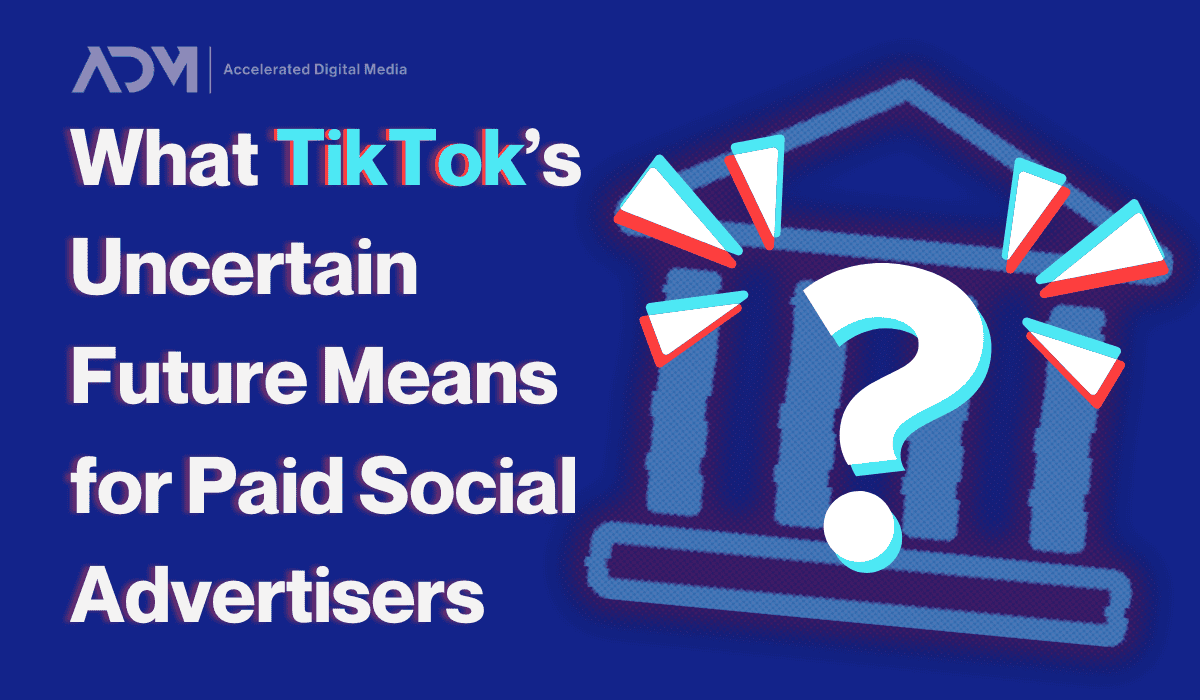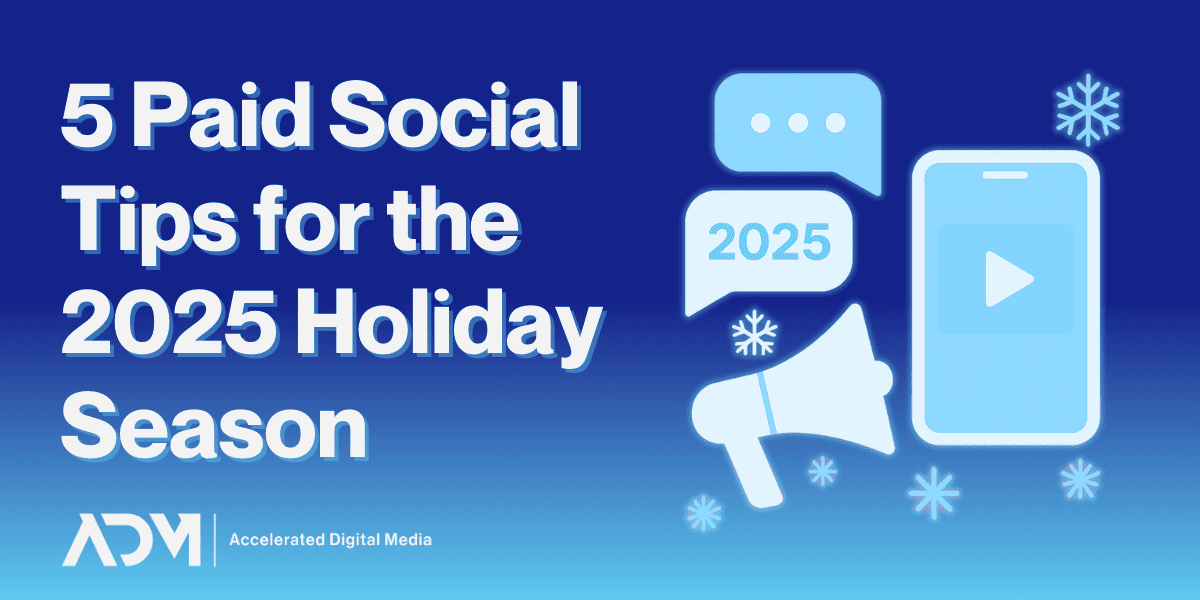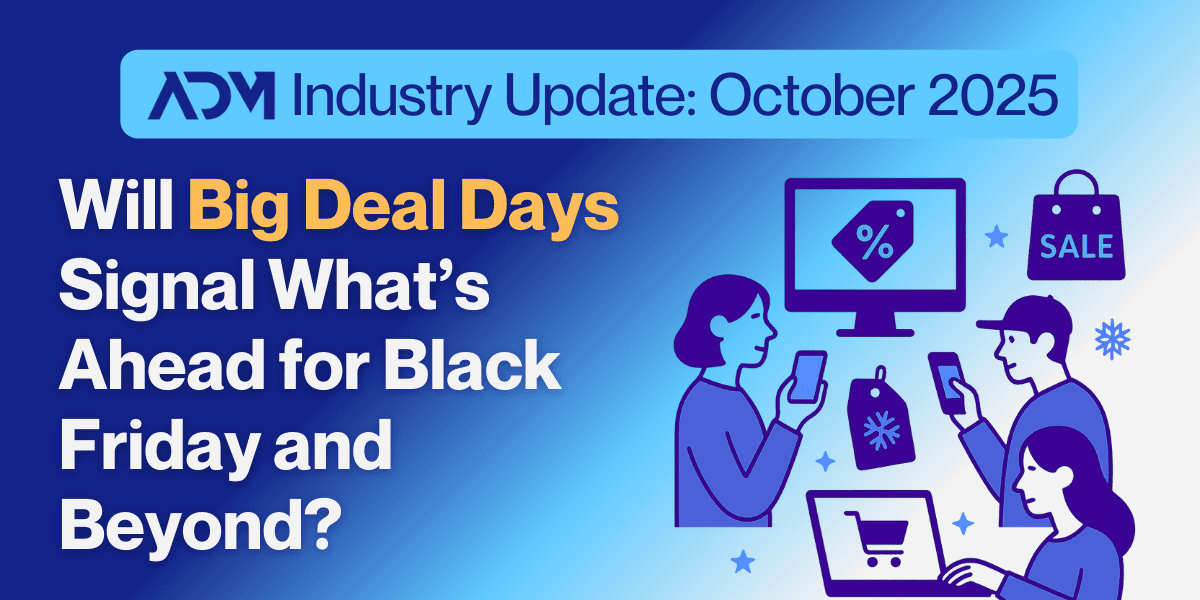TikTok’s future remains the biggest question mark in digital marketing—which is no small thing, given everything else that is going on. The Chinese-owned short-form video app has rapidly become the defining social media platform of the 2020s, having long-since eclipsed 1.5 billion monthly users. That includes about 150 million users in the United States, who may soon lose access to TikTok depending on the outcome of an ongoing legal battle.
Advertisers have grown to love TikTok: It’s where the users are today and where the latest trends start. For many brands, it has become a valuable tool for connecting with potential customers in new, engaging ways. But what happens to digital marketing if TikTok goes away?
ADM is paying close attention to these proceedings to see how they may impact our clients who advertise on TikTok—and what influence this could have on other social media advertising platforms going forward.
Why TikTok May be Banned in the US
Social media platforms generate immeasurable influence while capturing an incredible amount of data, and some in the United States government have concerns about how a competing nation could use that information and influence. As a result, Congress voted earlier this year to ban the app from app stores unless it was sold to American ownership—with that ban originally scheduled to come into effect on January 19th.
Now, it’s important to note that TikTok wouldn’t totally go away at that point. Existing installations would still work, but new users would not be able to download the app and it would no longer receive updates, meaning over time it would become unstable. The law would also prevent internet service providers (ISPs) from allowing users to access TikTok via web browser. The outcome would be more of a slow decline and disintegration than an instant shutoff.
TikTok is fighting that policy in the courts, with the Supreme Court scheduled to have an expedited hearing on the matter shortly. Meanwhile, after expressing some support for TikTok’s legality during the campaign, the new president-elect is now encouraging the Court to delay the law’s implementation until after he takes office. That move has drawn criticism for defying legal precedent—but it does show that the platform may have an ally in the form of the country’s (next) top executive.
At the same time, TikTok recently announced it would refund advertisers if the ban goes into effect, hoping to prevent a slowdown in ad spending.
Preparing for Advertising Changes if TikTok is Banned
Regardless of what happens to TikTok, short-form video content is here to stay. After the app took over as something of the successor to the beloved-but-short-lived Vine platform, major social platforms began introducing similar formats and functionality to capitalize on people’s insatiable appetite for brief videos.
Should TikTok become unavailable, YouTube Shorts and Instagram Reels are readily available alternatives for brands to allocate their advertising resources. They utilize the same brief runtimes and portrait-style videos as TikTok and are already available to massive pre-existing userbases. Parent companies Google and Meta have invested heavily to integrate these features into their interfaces, and both are becoming increasingly key components of paid and organic strategy on those platforms.
So even if TikTok might not disappear off the face of everyone’s screens soon, it’s still wise for brands to begin honing their strategy for its potential absence. To translate TikTok success to other platforms, here are two things you need to keep in mind:
- Search Intent Utilization: Users often use TikTok as a search tool, similar to other social platforms like Pinterest. Brands should apply insights gained from TikTok to Pinterest, targeting high-intent audiences with tailored content that meets their search behaviors.
- Creative-First Approach: TikTok’s success is largely due to ads that feel organic and blend seamlessly with user-generated content. Adopting this creative-first strategy across platforms like Facebook and Instagram can enhance ad performance across social channels. Emphasize authenticity and relatability to resonate with audiences.
By leveraging insights from TikTok’s success and remaining agile in the face of change, brands can continue to connect with their audiences effectively across various platforms.
Key Takeaways for Brands
Change is a constant in paid social advertising. Whether the TikTok ban survives legal challenges or not, it’s vital to stay atop of the latest news in this space to always know where your advertising dollars should go in the future.
- Maintain a Diverse Social Presence: Ensure your brand is active on multiple platforms where your customers engage. Diversification mitigates risks associated with reliance on a single platform.
- Monitor User Behavior Trends: Stay informed about shifts in user engagement across social apps. If TikTok is banned, users will likely increase time spent on alternative platforms. Adjust your strategies to align with these changes.
- Adaptability is Crucial: The social media landscape is dynamic, with platforms emerging and evolving rapidly. Historical precedents like the rise and fall of Vine and the transformation of Twitter into X demonstrate the importance of adaptability. Smart advertisers are equipped to navigate such changes effectively.
At ADM, we know how to help our clients weather and withstand the constant turbulence changing tastes, platforms, and policies. If you’re looking for a paid social media agency that can keep your audience engaged no matter the platform, consider reaching out to our team today.




